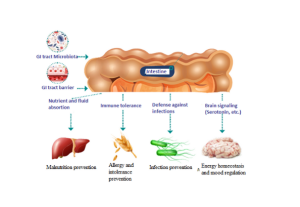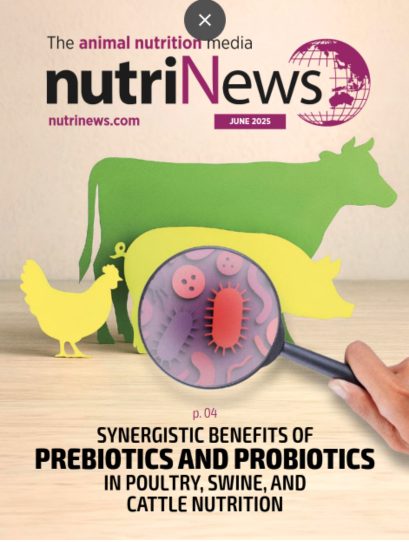What is intestinal health?
Enhancing the intestinal health of pigs has become a priority for the pig sector. It allows to improve productive performance, minimize production costs and achieve high levels of Animal Welfare that are accepted by society.
In recent years, the number of studies and references to what is known as “Intestinal Health” have increased significantly.
The definition of Gut Health will depend on who is asked to define it and what circumstance or factors are being referred to:
![]() If it is believed that the best intestinal health is found in nature, in wild animals, this will depend on the moment chosen to make such determination. Since it can be evaluated at a time of abundance of food, such as autumn in the Extremadura pasture for Iberian pigs, or during the icy winter with snow and few resources in the Arctic tundra for the few wild boars that live there at that time.
If it is believed that the best intestinal health is found in nature, in wild animals, this will depend on the moment chosen to make such determination. Since it can be evaluated at a time of abundance of food, such as autumn in the Extremadura pasture for Iberian pigs, or during the icy winter with snow and few resources in the Arctic tundra for the few wild boars that live there at that time.
![]() If veterinarians are asked about the topic, it is most likely that they will refer to “the absence of digestive pathologies that hinder the development of the animal of interest”. Which in this case is the piglet.
If veterinarians are asked about the topic, it is most likely that they will refer to “the absence of digestive pathologies that hinder the development of the animal of interest”. Which in this case is the piglet.
![]() On the other hand, nutritionists will say that intestinal health refers to that state of the animal in which digestive functions develop with complete normality. However, it is important to define what normality is.
On the other hand, nutritionists will say that intestinal health refers to that state of the animal in which digestive functions develop with complete normality. However, it is important to define what normality is.
![]() Scientists will answer that they don’t know yet, and that more studies and trials are needed.
Scientists will answer that they don’t know yet, and that more studies and trials are needed.
![]() For technicians in animal production, Pietro Celi’s definition can be adopted:
For technicians in animal production, Pietro Celi’s definition can be adopted:
“A steady state where the microbiome and intestinal tract coexist in symbiotic equilibrium, and where animal welfare and performance are not limited by intestinal dysfunction.”
Criteria to measure intestinal health
[register] Bischoff proposes 5 criteria for measuring gut health:
- Effective digestion and absorption of nutrients, water and minerals. Regular bowel movements, normal transit time and no abdominal pain. Normal consistency of stool and absence of nausea, vomiting, diarrhea, constipation and bloating.
- Absence of diseases in the gastrointestinal tract (TGI),” without stomach diseases, such as ulcerations, carbohydrate intolerances or enzyme deficiencies.
- Normal and stable microbial flora, without abnormal growths of some bacterial species over others and without diarrhea associated with infection or parasites.
- An effective immune state, with an effective function of the gastrointestinal barrier: Effective and normal production of mucus, without bacterial translocations. Normal IgA levels. Immunological tolerance and normal activity of immune cells with absence of mucosal hypersensitivity.
- A state of well-being difficult to identify in production animals but that can be measured with normal serotonin levels and in the absence of stress markers.
Figure 1. The impact of the gut on health

The gastrointestinal tract contributes to health by ensuring digestion and absorption of nutrients, minerals and fluids thanks to several mechanisms, such as mucosal induction and systemic tolerance, the presence of defense systems against infections and other pathogens, and signaling from the periphery to the brain.
The function of the intestine is not limited to the processing of food and subsequent absorption of nutrients and fluids:
![]() Animal experiments and human data have shown that through its enzymatic capacity, the gut is able to communicate with bacteria that support digestion.
Animal experiments and human data have shown that through its enzymatic capacity, the gut is able to communicate with bacteria that support digestion.
![]() The gut regulates epithelial and immune functions which are important for gut health and overall health.
The gut regulates epithelial and immune functions which are important for gut health and overall health.
![]() The gut informs the brain, through the vagus nerve and certain hormones, about energy absorption and other conditions that can affect mood and overall well-being.
The gut informs the brain, through the vagus nerve and certain hormones, about energy absorption and other conditions that can affect mood and overall well-being.
![]() The intestine induces self-tolerance of the immune system, while establishing an immune defense against external aggressions of organisms transported with food.
The intestine induces self-tolerance of the immune system, while establishing an immune defense against external aggressions of organisms transported with food.
Celi states that there are 6 components that must be taken into account and studied to define intestinal health. All being similar to those that Bischoff takes into account with the only exception of incorporating the diet which tends to be more manipulated and directed than in human intestinal health.

How to measure intestinal health?
M. Varley, in 2017 (comment in Pig Progress), defined that for an animal to have good intestinal health it is necessary that a high correlation between general health and intestinal health exists. Which implies that:
- Its weight gain from 30 kg to slaughterhouse is optimal
- The number of days with antibiotic treatment is low or zero
- The score of lung lesions in slaughterhouse is zero
- The level of acute-phase protein which measures stress or inflammation at different times within the productive life is at a normal level
However, this type of evaluation must associate another series of values that measure the different components of intestinal health.

Measuring gut health with in vivo techniques requires sophisticated methods, special facilities and specialized surgical technicians, making it impractical on a practical level.
To measure intestinal health, the use of biomarkers has been proposed , which are substances that can be used as biological indicators.
- Biomarkers must be able to be objectively measured and be indicators of normal biological processes, pathological states or responses to pharmacological treatments.
The development of biomarkers for gastrointestinal functionality is crucial to advance in the understanding of events affecting the intestinal barrier, its functionality and the ecology of the gastrointestinal microbiota.
As of present, there is a good knowledge of the digestive system and the mechanisms of absorption of the main macro and micronutrients. However, there is a large gap in research related to biomarkers of gastrointestinal permeability, gastrointestinal barrier function, biomarkers for the intestinal endocrine system, and biomarkers that are indicative of the functional presence of beneficial microbiota or its metabolites.♦
[/register]
Continue reading (Spanish content): “Inclusion of fiber in piglet diets”












